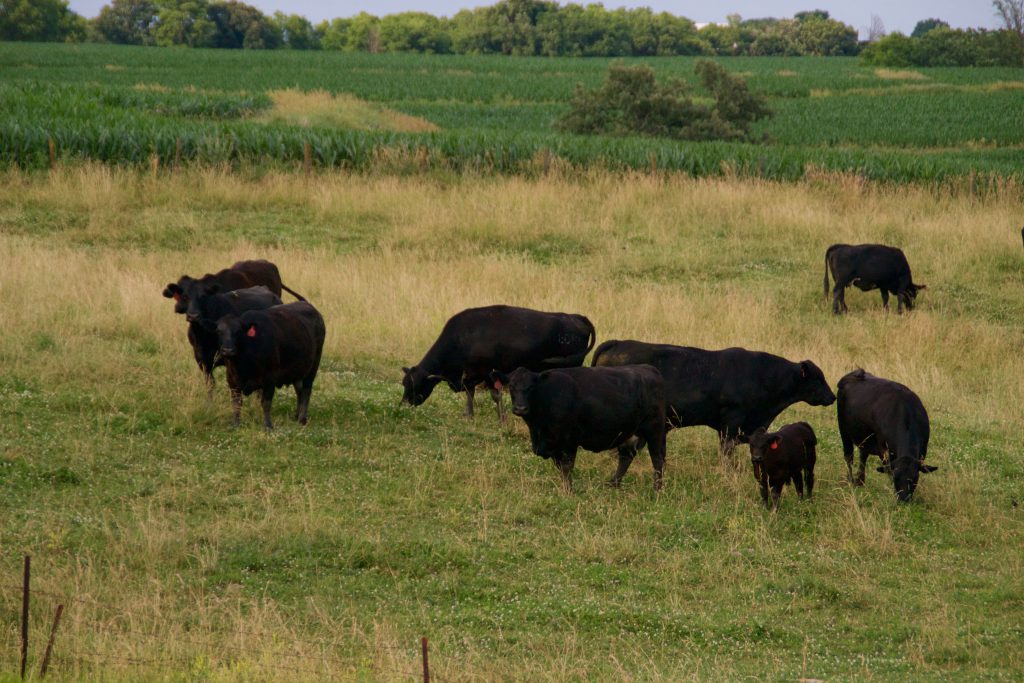May is Beef Month across the nation so Dr. Jim Pottebaum is the guest blogger this month with information about Cattle. At Winterset Veterinary Center he sees both hobby farm and beef producer’s cattle. We hope you enjoy this article and support our local beef producers by eating Beef.
That hamburger or steak that you’re enjoying came from a commercial cattle farm or ranch near you. But there’s more to the story. Cattle originally were three separate species: Bos Taurus (cattle), Bos Indicus (Zebu) and extinct Bos primigenius (Aurochs). Now there are nearly 200 breeds registered around the world. Cattle tend to interbreed—yaks, gaurs, bison-beefalo, are examples. The largest bull recorded weighed 3840# in 1955, a steer was 4720# in 1910. Cattle in India are revered and respected and processing them is forbidden.
Iowa ranks 7th in the US for cattle numbers—3.65 million head (Texas and Nebraska lead), and adds $6.8 billion to Iowa’s economy and provides 28,590 jobs in the industry. The most popular dairy cattle are Holstein, producing 75 to 100# of milk per day. The most popular beef breed is an Angus cross which is very well suited to pasture grazing in Iowa.
The Madison County Cattlemen is a strong group of producers here that promote beef, volunteer at many events, help provide free entrance to the County Fair, and give out many many scholarships to youth in the county.
When the entire DNA genome was mapped in 2009, the industry could focus on improving traits for best practices—more milk, more tender beef, more efficiency, etc. Very specific traits can be improved through AI (artificial insemination) and embryo transfer.
With the increases in acreage properties, the Low Line and somewhat exotic breeds have become favorable. These animals have become more of “production pets” than ever before. Australia developed this breed, and has been adopted in the US since 1997. Average commercial beef calves weigh 75 to 80# at birth, the lowline breed average 42-50#. Mature cows are 39 inches tall and weigh 800#. They have a quiet temperament, easy to raise, extremely efficient, and produce high quality meat. They average 30% larger ribeye area per hundredweight than any other breed with excellent marbelling.
The appeal to people in the country with a few acres is that they are an affordable project for kids while grazing extra acres and ties families to farming as their grandparents or parents did. Cattle production has advanced in huge amounts over the years, and the best is yet to come.
When you enjoy a tasty steak or grill burgers, thank an Iowa farmer!
